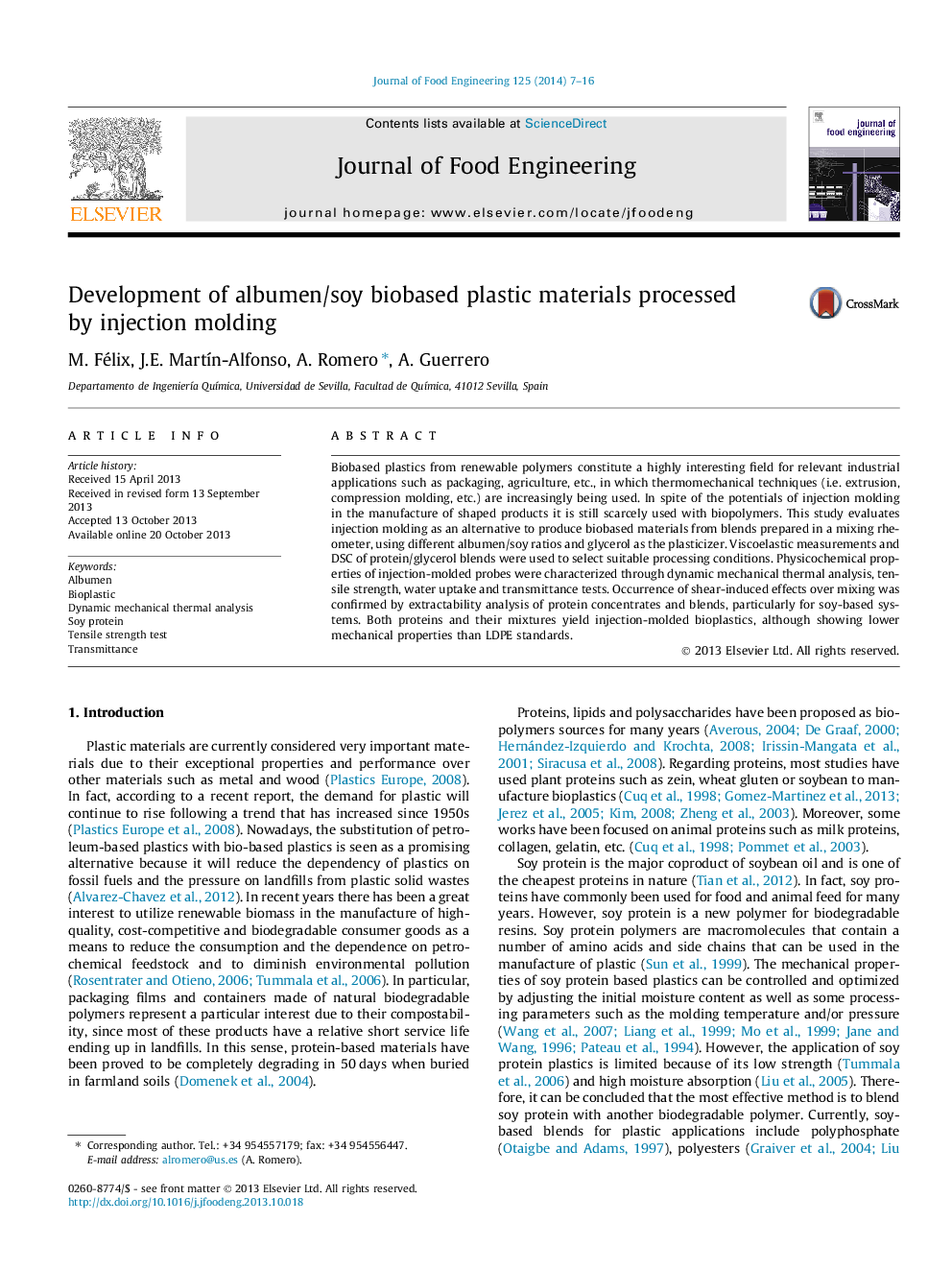| Article ID | Journal | Published Year | Pages | File Type |
|---|---|---|---|---|
| 223246 | Journal of Food Engineering | 2014 | 10 Pages |
•Protein/glycerol mixing (particularly with soy) yields shear-induced crosslinking.•Rheology and DSC data are useful to select injection-molding processing conditions.•Injection molding shows good potentials in the processing of AP/SPI-based plastics.•Injection molding may also yields highly transparent AP/SPI-based materials.
Biobased plastics from renewable polymers constitute a highly interesting field for relevant industrial applications such as packaging, agriculture, etc., in which thermomechanical techniques (i.e. extrusion, compression molding, etc.) are increasingly being used. In spite of the potentials of injection molding in the manufacture of shaped products it is still scarcely used with biopolymers. This study evaluates injection molding as an alternative to produce biobased materials from blends prepared in a mixing rheometer, using different albumen/soy ratios and glycerol as the plasticizer. Viscoelastic measurements and DSC of protein/glycerol blends were used to select suitable processing conditions. Physicochemical properties of injection-molded probes were characterized through dynamic mechanical thermal analysis, tensile strength, water uptake and transmittance tests. Occurrence of shear-induced effects over mixing was confirmed by extractability analysis of protein concentrates and blends, particularly for soy-based systems. Both proteins and their mixtures yield injection-molded bioplastics, although showing lower mechanical properties than LDPE standards.
